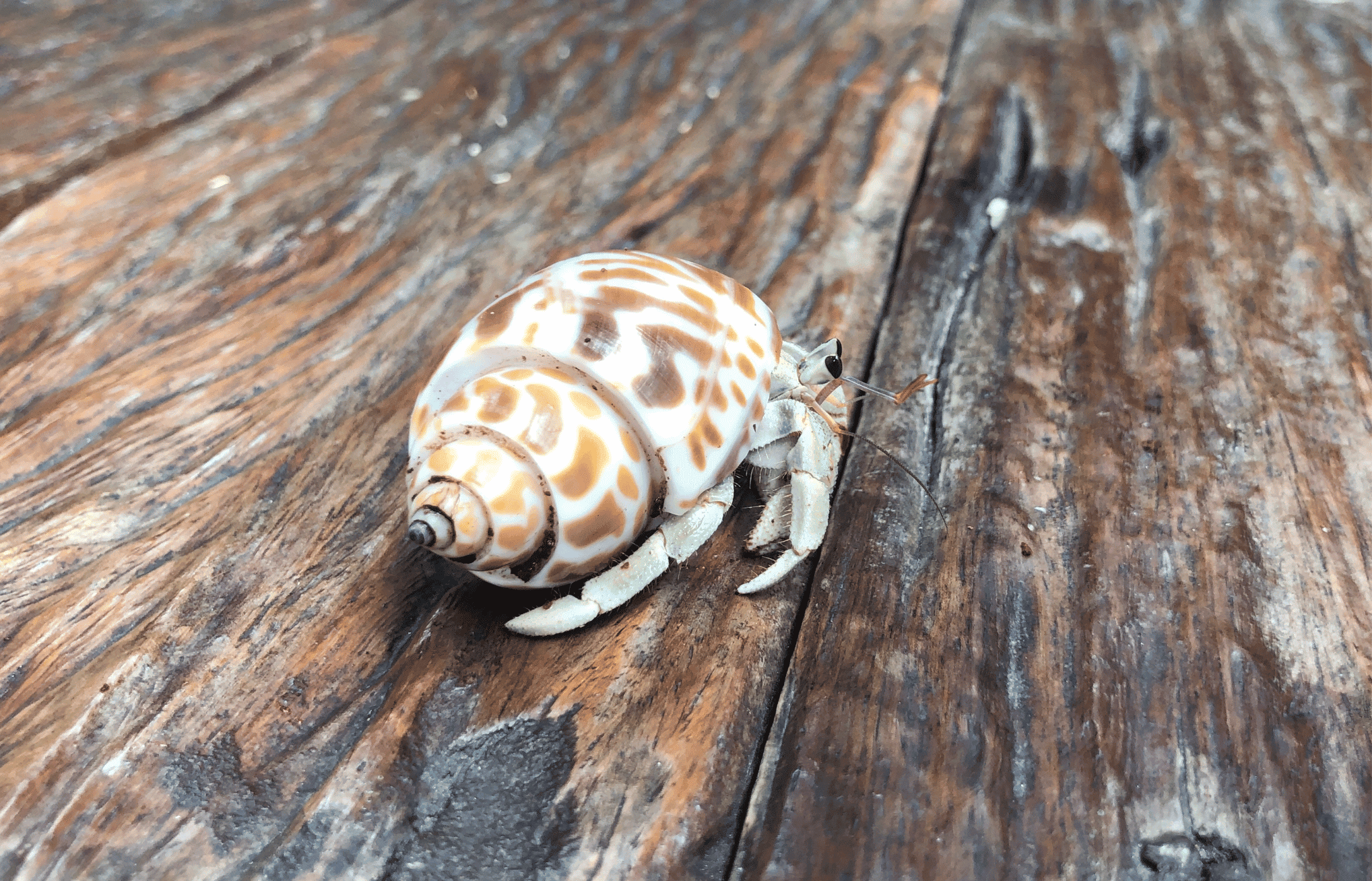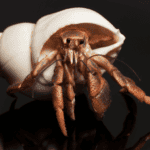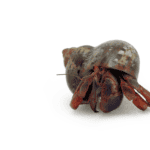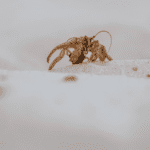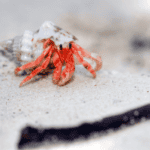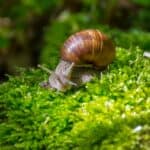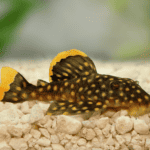Hermit crabs are fascinating and unique pets, but their dietary needs are often a source of confusion for pet owners. Feeding hermit crabs properly is critical for their survival and health. Unlike more common pets that often come with clear feeding instructions, hermit crab diet requirements are more complex. These crustaceans thrive on a varied diet that includes a range of natural foods. Understanding what constitutes a balanced meal for a hermit crab is the first step in ensuring that your pet lives a healthy and happy life.

In their natural habitat, hermit crabs are scavengers, feasting on a wide variety of organic materials. This means in captivity, their diet should be as diverse as possible, including fruits, vegetables, meat, and fish, all in small, manageable pieces. It’s also important to know that hermit crabs require both freshwater and saltwater sources not only for drinking but also to maintain proper shell water balance, which is crucial for their overall health. Creating an environment that mimics their natural setting helps in establishing regular feeding habits and ensures that they receive the necessary nutrients from their diet.
Key Takeaways
- Hermit crabs require a diverse diet of fruits, vegetables, meat, and fish.
- Both freshwater and saltwater sources are essential for hermit crabs’ hydration and health.
- Mimicking a hermit crab’s natural environment supports proper feeding and nutrition.
Understanding Hermit Crab Dietary Basics
In maintaining a hermit crab’s health, grasping the essentials of their diet is crucial. We’ll explore the various aspects of what constitutes a nutritious diet for these intriguing creatures, ensuring they thrive in our care.
Natural Diet of Hermit Crabs
Hermit crabs are omnivores and scavengers by nature. In the wild, their diet consists mainly of algae, decaying wood, leaf litter, fallen fruit, and a range of proteins from sources like dead animals and insects. Mimicking this natural diet in captivity is important for their health.
Commercial Hermit Crab Food
While commercial hermit crab food can be convenient, not all foods are created equal. Pellet food, often available, may be used as a base; however, one must ensure it is free from harmful additives such as copper sulfate and ethoxyquin, which can be detrimental to hermit crabs.
Importance of Variety in Diet
A varied diet is essential for hermit crabs, similar to their omnivorous and scavenging habits in the wild. Their diet in captivity should include a mix of fruits, veggies, meat, and fish to meet their nutritional needs. Offering a range of foods helps prevent nutritional deficiencies.
The Role of Calcium and Protein
Calcium and protein are pivotal for hermit crabs, especially for the growth and maintenance of their exoskeleton. Foods high in calcium, like cuttlebone, and protein-rich foods, such as shrimp, should be staples in their diet. This is particularly important during molting when they regenerate their exoskeleton.
Frequency and Schedule of Feeding
Hermit crabs should be fed daily, removing uneaten food within 24 hours to prevent spoilage. Food dishes, preferably shallow, should be used to serve food. This routine aids in simulating their natural feeding habits and maintaining cleanliness in their habitat.
Understanding Safe and Toxic Foods
We must distinguish between safe and toxic foods for hermit crabs. Safe foods are free from pesticides and are wholesome, such as fresh fruits and vegetables. Conversely, toxic substances to avoid in foods include pesticides, ethoxyquin, and copper sulfate, as they can be fatal to hermit crabs.
Avoiding Harmful Additives
Harmful additives commonly found in processed foods can jeopardize the health of hermit crabs. Being vigilant about reading labels on commercial foods is necessary. Ideally, we should steer clear of foods containing any chemical preservatives or artificial colorings when choosing meals for hermit crabs.
Specifics of Hermit Crab Nutrition

We must ensure hermit crabs receive a balanced diet composed of proteins, fruits and vegetables, and calcium to promote their overall health and wellbeing.
Favorable Foods for Hermit Crabs
Hermit crabs thrive on a varied diet that mirrors what they would eat in the wild. Vegetables such as carrots, spinach, celery, and cucumbers can be offered, alongside fruits like mangoes, apples, grapes, and bananas. It’s crucial to serve these foods raw to retain their nutritional value.
Protein Sources for Hermit Crabs
Proteins are vital for hermit crab growth and shell strength. Meat, fish, and seafood are great protein sources, with options including bite-sized pieces of cooked meats, fish flakes, or small amounts of tinned fish. Other items such as crushed eggshells and boiled eggs also suffice.
Fruits and Vegetables in Hermit Crab Diet
Hermit crabs benefit from a wide array of fruits and vegetables, which provide essential vitamins and minerals. Offer small dices of grapes, strawberries, blueberries, and pineapple, along with chopped carrots, apples, and leafy greens. All produce should be thoroughly washed to remove pesticides before serving.
Supplementing Calcium
Calcium is a cornerstone nutrient for a hermit crab’s exoskeleton. Provide ample calcium through cuttlebone, crushed oyster shells, or coral sand. These can be mixed into their regular diet or placed in the habitat for them to consume at their leisure.
Treating with Healthy Snacks
Occasionally, we can offer hermit crabs treats such as fresh coconut, unsalted nuts, and additional fruits like pineapples or mangoes. Treats should be given in moderation to avoid nutritional imbalance. Avoid sugary, salty, or processed human food as these can harm hermit crabs.
Hydration and Water Requirements

Proper hydration is crucial for hermit crabs, as they require both fresh water and salt water for drinking and maintaining their gills moist. We’ll guide you through setting up appropriate water dishes and explain the importance of humidity for these crustaceans.
Fresh Water for Hermit Crabs
Hermit crabs need access to fresh water daily. We should always make sure that the water provided is dechlorinated, since chlorine can be harmful to them. To achieve this, we can use a dechlorinator or provide bottled spring water. It’s essential for hermit crabs to submerge themselves in fresh water to drink and replenish their shell water.
Salt Water Needs
In addition to fresh water, hermit crabs also require salt water that mimics their natural sea water environment. We can prepare this by mixing aquarium-grade salt with dechlorinated or distilled water. Never use table salt as it contains additives that are harmful to hermit crabs. They use salt water to balance the salinity in their bodies and for their overall well-being.
Setting Up Water Dishes
We must provide two separate water dishes for fresh and salt water to prevent cross-contamination. The dishes should be shallow enough for hermit crabs to climb in and out of easily, but also deep enough for them to fully submerge if they choose to. Placing sea sponges within these dishes can aid hermit crabs in climbing out and also help in maintaining the humidity levels.
Importance of Humidity
Maintaining proper humidity levels within the habitat is vital for the respiratory health of hermit crabs. We aim for a humidity level of about 70-80%. Overly dry air can cause their gills to dry out and become ineffective. Regular misting and a proper lid on the habitat can help sustain the required humidity levels. Providing ample water sources also contributes significantly to the overall humidity within the tank.
Creating a Suitable Environment for Feeding

To ensure pet hermit crabs thrive, we must focus on their environment, specifically where and how they eat. The feeding area requires careful consideration.
Safe Substrate Choices
We look for substrates that mirror the natural habitat of hermit crabs. A mix of coconut fiber and sand is optimal, providing a texture that allows them to dig and bury food. Our choices include:
- Coconut Fiber: Excellent for maintaining humidity
- Sand: Should be fine-grained and free from dyes or additives
Accessibility to Food and Water
Hermit crabs require easy access to food and water dishes. We place shallow food dishes in the habitat, which prevents substrate contamination. For hydration, water dishes must be deep enough for them to submerge but easy to climb out of. We use:
- Flat, shallow dishes for food
- Two water dishes: one freshwater, one saline
Maintaining Proper Temperature and Lighting
Temperature significantly affects hermit crab activity. We maintain the habitat at 75-85°F, using an under-tank heater if needed. For lighting, indirect natural lighting or artificial light that simulates day and night cycles is sufficient. We avoid placing the habitat in direct sunlight which could overheat the enclosure.
- Temperature: 75-85°F
- Lighting: Simulates natural cycles
Decor and Plants for Natural Foraging
Incorporating decor and plants like moss, edible flowers, and grass provides hermit crabs with a naturalistic space for foraging. We aim to recreate their wild environment, ensuring the decor is non-toxic and plants are safe if consumed.
- Decor: Non-toxic and provides hiding spots
- Plants: Safe for consumption, enhances humidity
Monitoring Hermit Crab Health and Diet

Proper nutrition is crucial for a hermit crab’s health, affecting everything from its exoskeleton to its molting cycle. We will explore how to recognize if hermit crabs are getting their dietary needs met, identify feeding issues, and understand when to seek veterinary care.
Signs of Proper Nutrition
Hermit crabs with a balanced diet display certain positive signs indicating their nutritional needs are being fulfilled. We look for vibrant coloration, an active lifestyle, and a firm exoskeleton as these demonstrate that their feeding regimen supports overall health. A successful molt, wherein the hermit crab safely sheds its exoskeleton and forms a new one, is another critical sign of good nutrition.
Identifying Feeding Problems
Feeding problems in hermit crabs may arise from an unbalanced diet lacking in variety or essential nutrients. Signs of dietary issues can include:
- Lethargy: If hermit crabs are less active than usual, it could indicate a problem.
- Poor molting: Difficulty shedding their exoskeleton or other molting issues may be observed.
- Weight loss: A noticeable decrease in size or weight is a red flag.
We ensure their diet includes both plant- and animal-based foods, such as fruits, vegetables, nuts, seeds, and meaty items like fish or shrimp, to prevent these issues.
When to Consult a Veterinarian
We encourage hermit crab owners to consult a veterinarian:
- When nutritional problems persist despite dietary adjustments.
- If they notice signs of distress or illness during or after molting.
- When abnormal behavior or physical symptoms that could signal nutritional deficiencies occur.
Veterinary expertise can guide us through targeted changes in diet and management that promote the well-being of our hermit crabs.
Responsible Hermit Crab Care Practices
Providing appropriate care for hermit crabs requires a keen understanding of their dietary and habitat needs, ensuring they thrive in both captivity and the wild.
Researching Dietary Needs
Hermit crabs are omnivores and benefit from a varied diet that mimics what they would eat in the wild. This includes a mixture of:
- Fruits and vegetables: Apples, grapes, carrots, and spinach are good options.
- Protein sources: Cooked meats, fish, and eggs can be provided in tiny pieces.
- Calcium: Cuttlebone or crushed eggshells for shell growth.
It is essential for us to understand nutritional needs to avoid deficiencies which can lead to health issues.
Avoiding Unsuitable Commercial Foods
When selecting commercial crab food, it is crucial to read the ingredients carefully. Some products may contain preservatives and colorings that are unsafe or potentially toxic to hermit crabs. Always opt for products from reputable brands like Zoo Med that specifically cater to hermit crabs’ nutritional needs.
Providing Natural and Engaging Habitat
A conducive habitat is as important as diet. Hermit crabs thrive on a mix of sand and coconut fiber as substrate which allows them to burrow. The inclusion of:
- Plants and decor: Both live and artificial plants alongside driftwood and other hiding places offer a stimulating environment.
- Humidity and temperature control: Ensures the environment is suitable for terrestrial hermit crabs.
This ensures a habitat that closely resembles their natural landscape.
Commitment to Long-Term Care
Hermit crabs can live up to two decades with appropriate care. This duration reflects a substantial commitment that extends beyond regular feeding to include:
- Regular habitat maintenance
- Monitoring health
- Providing social interaction
Understanding and embracing the commitment to hermit crab care is imperative.
Feeding Wild Versus Pet Hermit Crabs
Wild hermit crabs typically forage for food, which constitutes organic materials and small critters. However, pet hermit crabs rely solely on what we provide — balancing commercial food with fresh options. Remember that the diet of wild and pet crabs should be respective of their environments, with pets requiring a more controlled and observed feeding routine.
Common Questions and Concerns
When feeding hermit crabs, one must consider their varied diet needs. We take a closer look at handling picky eaters, dietary variations, suitable food sizes, and proper storage techniques.
Handling Picky Eaters
Picky eating can be common in hermit crabs. We can entice our pets by offering a variety of fruits and vegetables, ensuring these are cut to small, manageable pieces. Occasionally introducing new items can also help stimulate their appetite.
Replacing or Supplementing Commercial Diets
Hermit crabs can eat a commercial diet; however, a solely pellet-based diet isn’t optimal. We recommend supplementing with fresh fruits and veggies. Safe, nutritious add-ons to pellet food can greatly enhance their overall health.
Choosing the Right Food Sizes and Types
It’s important to select appropriate food sizes and types based on the size of our hermit crabs. Smaller crabs require tinier pieces. We should offer a mix of both commercial diets and natural foods such as chopped leafy greens, grains, and proteins.
Managing Food Freshness and Storage
Food freshness is vital. We recommend storing perishable foods in the refrigerator and keeping dry foods, like pellet food, in a cool, dry place. Additionally, we must clean food dishes regularly to maintain a safe and hygienic environment.
Enhancing the Diet with Natural Supplements
Hermit crabs thrive on a varied diet that includes natural supplements. We can significantly improve their nutrition by incorporating a diverse array of plant matter.
Incorporating Plant Matter
It is crucial to diversify the diet of our hermit crabs with a selection of plant materials. Plants are a source of essential nutrients that can help in the overall well-being of hermit crabs. When we choose plants for their diet, we should ensure they are free of pesticides and other harmful chemicals.
- Leafy Greens: Provide a variety of leafy greens such as:
- Kale
- Spinach
- Romaine lettuce
- Dandelion leaves
These greens can be chopped finely and mixed into their regular food to enhance nutrient intake.
- Grasses and Edible Plants: In addition to leafy greens, we can offer:
- Sliced apples (without seeds)
- Shredded coconut meat
- Mango chunks
- Blanched zucchini slices
Grasses and other plant elements add texture and variety to their diet, which can stimulate the hermit crabs’ natural foraging behavior.
By ensuring the regular inclusion of fresh plant matter, we not only enrich their diet but also provide a more natural and welcoming habitat for our hermit crabs.
Frequently Asked Questions
We’ll cover essential information on what to feed hermit crabs to ensure they receive a balanced diet.
What types of food are safe and nutritious for hermit crabs?
Commercial hermit crab food often meets basic nutritional needs, but we can also provide fresh, natural foods. Safe and nutritious options include lean proteins, seaweed, cooked eggs, and unsalted nuts.
What variety of vegetables are suitable for a hermit crab’s diet?
Hermit crabs thrive on a diet that includes a range of vegetables. Leafy greens, like spinach and kale, and vegetables such as sweet potatoes and carrots are excellent choices for their nutritional value.
Which fruits should be included in a hermit crab’s feeding regimen?
We can offer hermit crabs fruits like mango, papaya, and coconut in moderation. Ensure fruits are washed and free from pesticides before serving.
How frequently should hermit crabs be fed for optimal health?
We should feed adult hermit crabs once a day, usually in the evening. Overfeeding can lead to spoilage and unsanitary tank conditions, so we remove uneaten food after 24 hours.
What are the dietary restrictions to consider for hermit crabs?
Avoid giving hermit crabs foods containing salt, sugar, pesticides, or preservatives. Chocolates, caffeine, and any inedible household plants are harmful and must be kept away from their diet.
Is it necessary for hermit crabs to have access to both fresh and saltwater?
Yes, hermit crabs need both fresh and saltwater. Freshwater is for drinking, while saltwater is essential for their molting process. We must provide water in dishes deep enough for them to submerge and replenish regularly.
